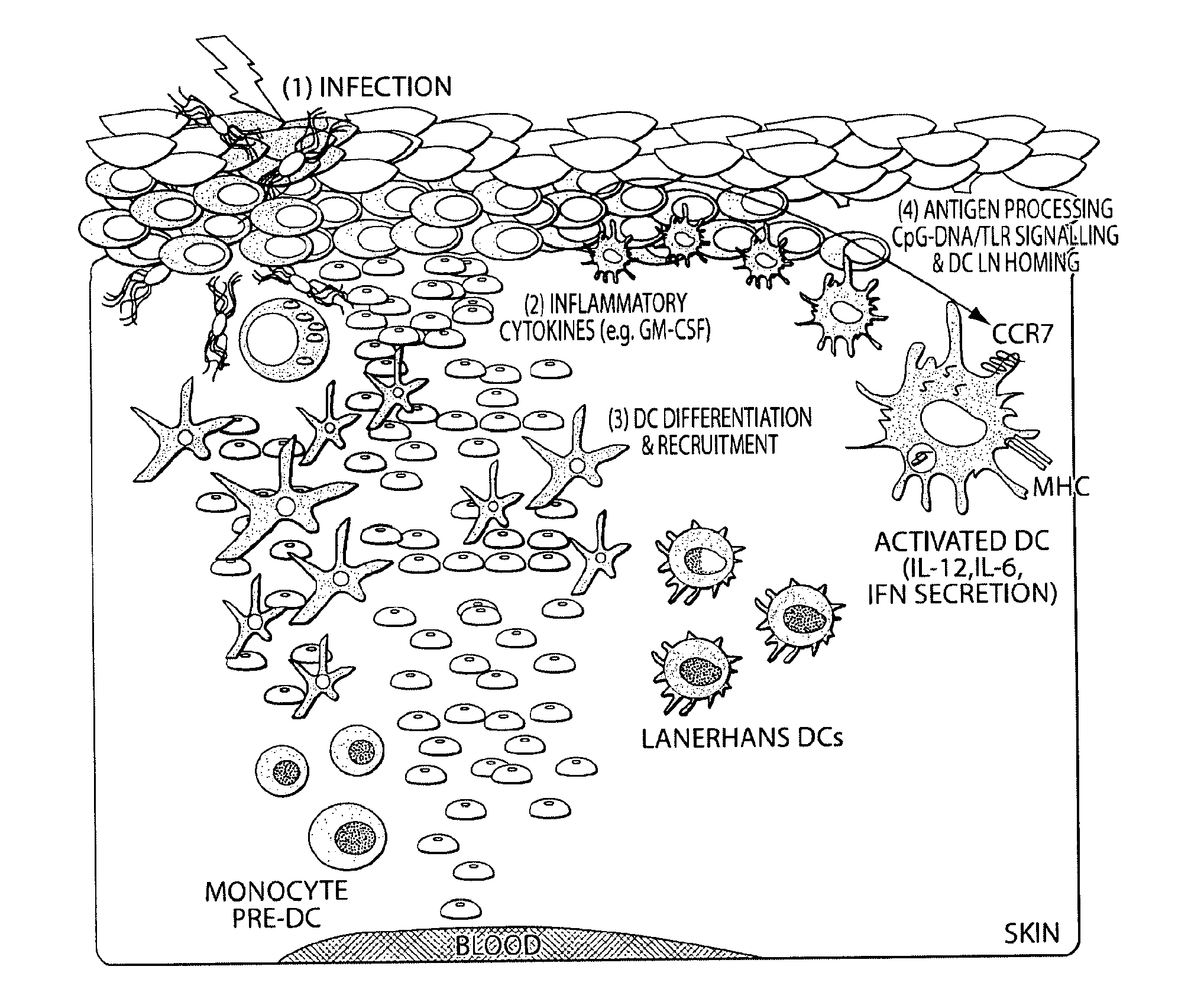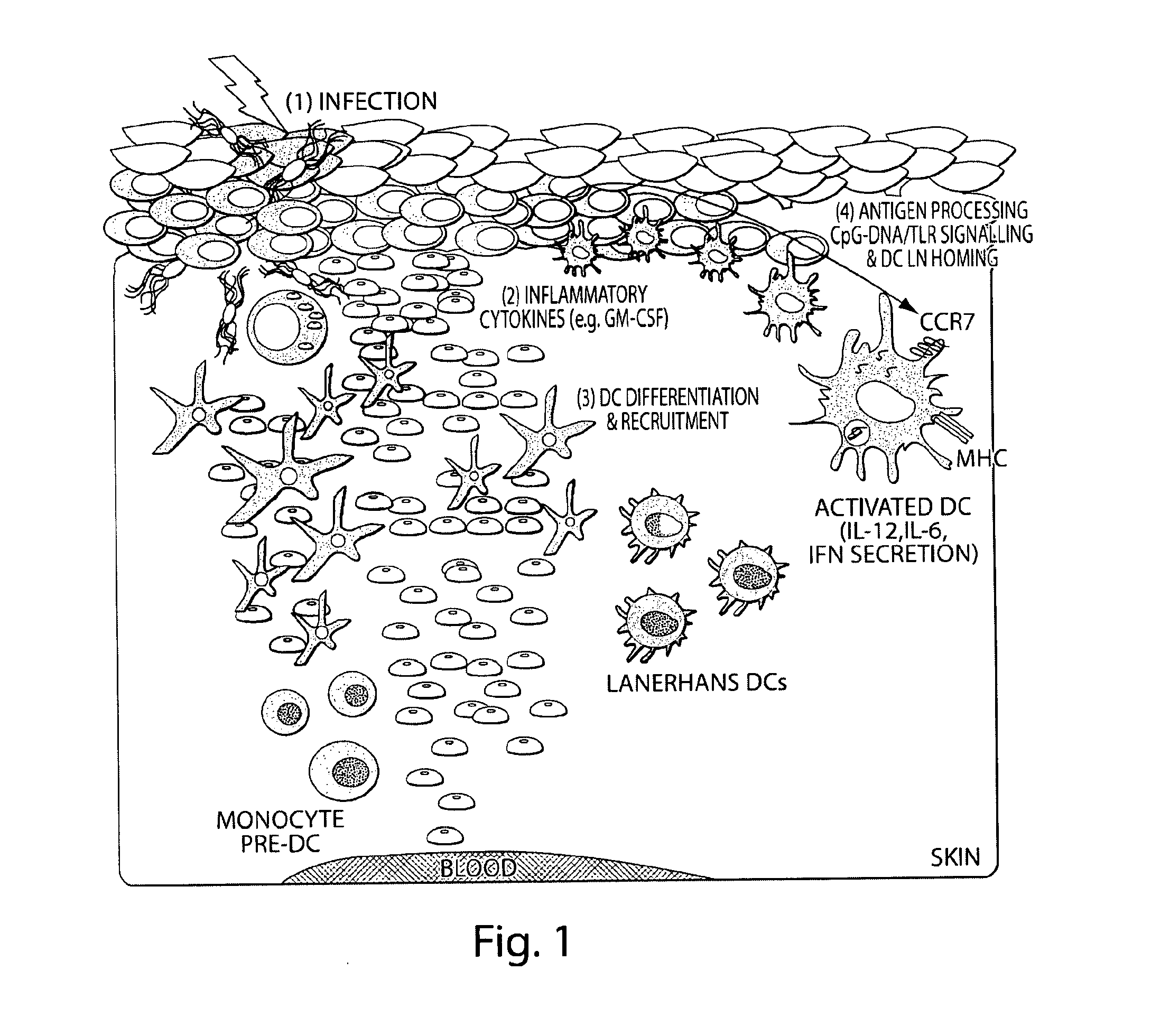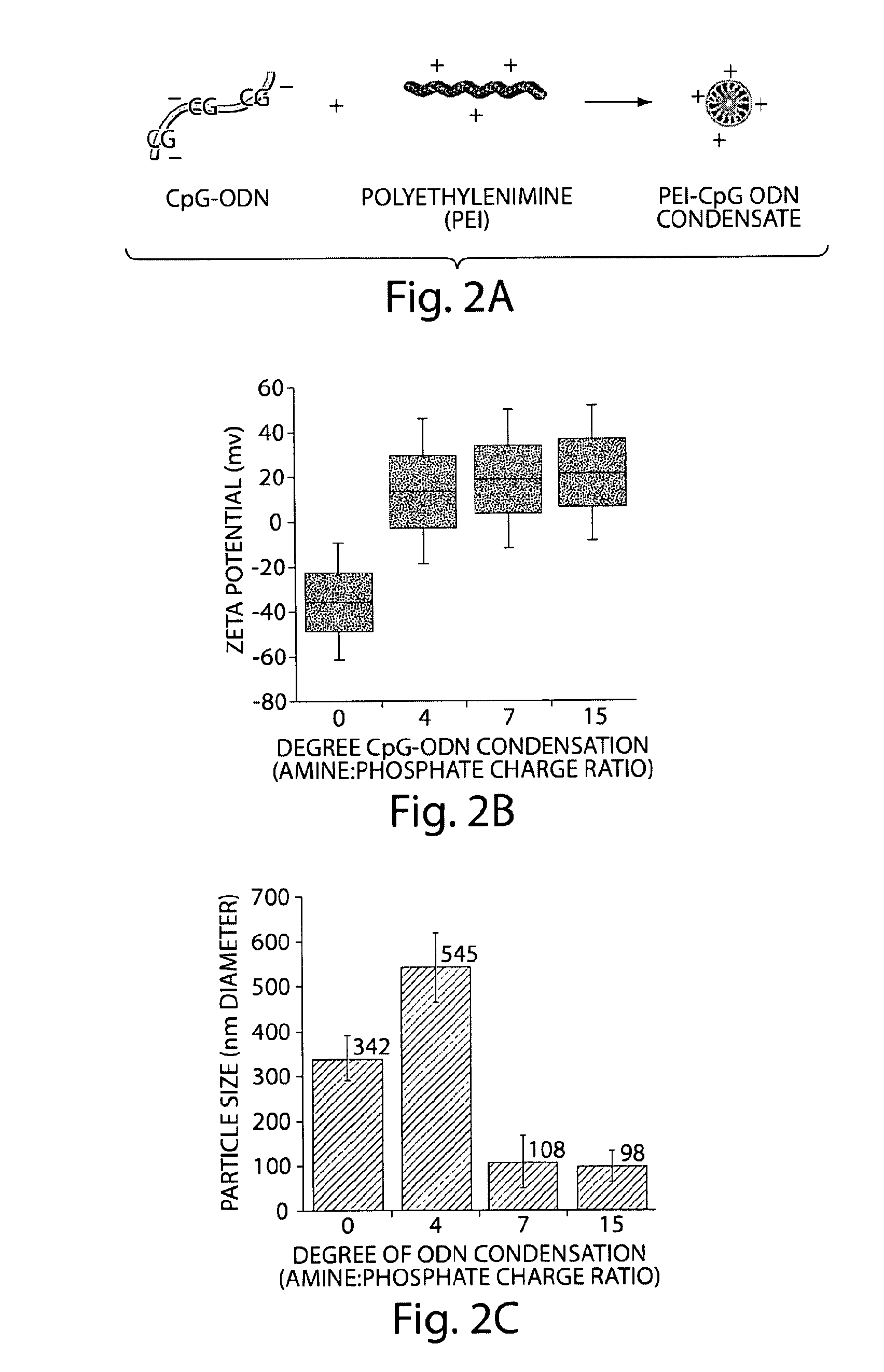Continuous Cell Programming Devices
a cell and continuous technology, applied in the field of continuous cell programming devices, can solve the problems of slow research on using dendritic cells for therapeutic benefits, and achieve the effects of reducing tumor progression, reducing tumor progression, and limited clinical effectiveness
- Summary
- Abstract
- Description
- Claims
- Application Information
AI Technical Summary
Benefits of technology
Problems solved by technology
Method used
Image
Examples
example 1
PLG Devices Loaded with GM-CSF
[0166]PLG matrices loaded with 3 μg of GM-CSF were implanted into the subcutaneous pockets of C57BL / 6J mice. The macroporous PLG matrix presents GM-CSF, danger signals, and cancer antigens in a defined spatiotemporal manner in vivo, and serves as a residence for recruited DCs as they are programmed. These matrices released approximately 60% of their bioactive GM-CSF load within the first 5 days, followed by slow and sustained release of bioactive GM-CSF over the next 10 days (FIG. 11A) to effectively recruit resident DCs.
[0167]The matrices were made as follows. A 85:15, 120 kD copolymer of D,L-lactide and glycolide (PLG) (Alkermes, Cambridge, Mass.) was utilized in a gas-foaming process to form macroporous PLG matrices (Harris, L. D., Kim, B. S., and Mooney, D. J. Open pore biodegradable matrices formed with gas foaming. J. Biomed. Mater. Res. 42, 396-402 (1998)). GM-CSF was encapsulated (54% efficiency) into PLG scaffolds using a high pressure CO2 foam...
example 2
Condensation of Synthetic CpG-ODN Molecules Increases Cellular Uptake
[0180]Synthetic CpG-ODN molecules were condensed with PEI, which resulted in positively charged, small PEI-CpG-ODN condensates that facilitates cellular internalization via promoting association with the cell membrane and enhancing transmembrane transport (FIG. 2). ODN Condensation at charge ratios of 7 and 15, between the amine groups of PEI and the phosphate groups of ODNs, resulted in optimal particle sizes and positive charge (FIGS. 2B and C), but a charge ratio of 7 was utilized in experiments due to PEI toxicity at high doses.
[0181]PEI condensation of CpG-ODN dramatically enhanced nucleotide uptake into DCs in vitro (FIG. 3A-C). Quantification of CpG-ODN uptake into DCs revealed orders of magnitude differences (up to ˜100-fold) between ODN condensates and naked ODN, which were maintained for extended time periods (>80 hrs) in vitro (FIG. 3C). The complexes subsequently decondense (FIG. 3D) allowing for CpG-OD...
example 3
CpG-ODN Induced DC Activation and DC Mobilization
[0182]Because effective CpG stimulation of DCs requires intercellular localization, the effects of PEI-condensation were evaluated on DC activation. DCs stimulated with PEI-CpG-ODN in vitro exhibited enhanced levels of CD86, MHCII and CCR7 expression, in comparison to those stimulated with naked CpG-ODN, which correlated strongly with DC uptake of condensates (FIGS. 4A and B). DCs exhibited an activated morphology, upon cellular uptake of PEI-CpG-ODN including the development of fine needle-like dendrites and large membrane expansion, which allows mature DCs to “wrap-up” T-cells promoting strong cell-cell interactions. The activation states of PEI-CpG-ODN stimulated DCs mirrored or surpassed that of positive controls stimulated with TNF-α and LPS (FIG. 3C) and PEI-CpG-ODN condensates promoted a 3-fold increase in DC migration toward CCL19 in vitro, over unstimulated DCs (FIG. 4D).
[0183]PEI-CpG-ODN condensates also released DCs from GM...
PUM
| Property | Measurement | Unit |
|---|---|---|
| distance | aaaaa | aaaaa |
| distance | aaaaa | aaaaa |
| distance | aaaaa | aaaaa |
Abstract
Description
Claims
Application Information
 Login to View More
Login to View More - R&D
- Intellectual Property
- Life Sciences
- Materials
- Tech Scout
- Unparalleled Data Quality
- Higher Quality Content
- 60% Fewer Hallucinations
Browse by: Latest US Patents, China's latest patents, Technical Efficacy Thesaurus, Application Domain, Technology Topic, Popular Technical Reports.
© 2025 PatSnap. All rights reserved.Legal|Privacy policy|Modern Slavery Act Transparency Statement|Sitemap|About US| Contact US: help@patsnap.com



